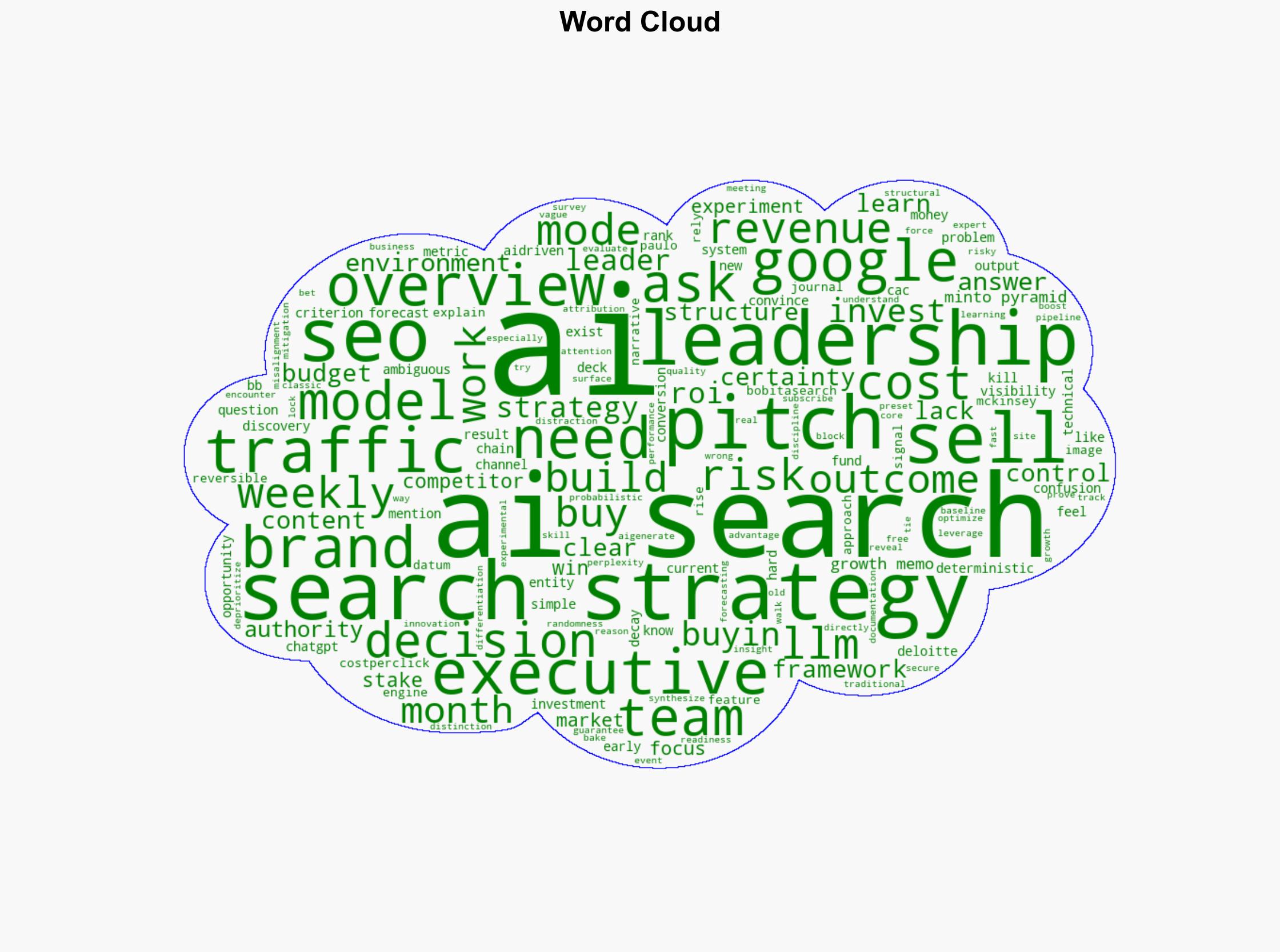Selling AI Search Strategies To Leadership Is About Risk via sejournal KevinIndig – Search Engine Journal
Published on: 2025-11-18
AI-powered OSINT brief from verified open sources. Automated NLP signal extraction with human verification. See our Methodology and Why WorldWideWatchers.
Intelligence Report:
1. BLUF (Bottom Line Up Front)
There is a moderate confidence level that the strategic adoption of AI search strategies by leadership will depend on effectively addressing perceived risks and uncertainties related to ROI and alignment with core business metrics. The most supported hypothesis is that AI search strategies can be successfully integrated if leadership is provided with clear, structured frameworks for risk mitigation and performance measurement. Recommended action includes developing a robust framework for attribution and ROI analysis to secure executive buy-in.
2. Competing Hypotheses
Hypothesis 1: AI search strategies will be adopted by leadership if they are presented with clear risk mitigation frameworks and deterministic ROI models. This hypothesis is supported by the need for certainty in decision-making and the ability to demonstrate clear outcomes.
Hypothesis 2: Leadership will remain hesitant to adopt AI search strategies due to the probabilistic nature of outcomes and the difficulty in aligning AI-generated results with core business metrics. This hypothesis is supported by the current lack of structured content and technical readiness, which complicates the attribution of ROI.
Hypothesis 1 is more likely due to the increasing pressure on businesses to innovate and maintain competitive advantage, which can be addressed by structured frameworks that provide clarity and reduce perceived risks.
3. Key Assumptions and Red Flags
Assumptions: It is assumed that leadership is primarily concerned with ROI and risk mitigation. It is also assumed that AI search strategies can be effectively measured and aligned with business metrics.
Red Flags: The vague outcomes and lack of clear attribution present significant risks. There is also a potential bias towards overestimating the readiness of existing infrastructure to support AI search strategies.
4. Implications and Strategic Risks
The failure to adopt AI search strategies could result in competitive disadvantage as rivals may gain early mover benefits in AI-driven discovery and brand authority. Economically, this could lead to stagnation in organic traffic and increased costs per click. Politically, internal resistance to change could hinder innovation. Informationally, there is a risk of misalignment between AI outputs and brand messaging.
5. Recommendations and Outlook
- Develop a comprehensive framework for measuring and attributing AI search strategy outcomes to core business metrics.
- Implement a phased approach to AI adoption, starting with pilot projects to demonstrate value and build confidence.
- Best-case scenario: Successful integration of AI search strategies leads to enhanced brand authority and competitive advantage.
- Worst-case scenario: Inability to align AI strategies with business metrics results in wasted investment and strategic stagnation.
- Most-likely scenario: Gradual adoption with mixed results, requiring ongoing adjustments and refinements.
6. Key Individuals and Entities
Kevin Indig (Author), Deloitte (Survey Source)
7. Thematic Tags
Cybersecurity, AI Strategy, Risk Management, Business Innovation
Structured Analytic Techniques Applied
- Adversarial Threat Simulation: Model and simulate actions of cyber adversaries to anticipate vulnerabilities and improve resilience.
- Indicators Development: Detect and monitor behavioral or technical anomalies across systems for early threat detection.
- Bayesian Scenario Modeling: Forecast futures under uncertainty via probabilistic logic.
- Narrative Pattern Analysis: Deconstruct and track propaganda or influence narratives.
Explore more:
Cybersecurity Briefs ·
Daily Summary ·
Support us





